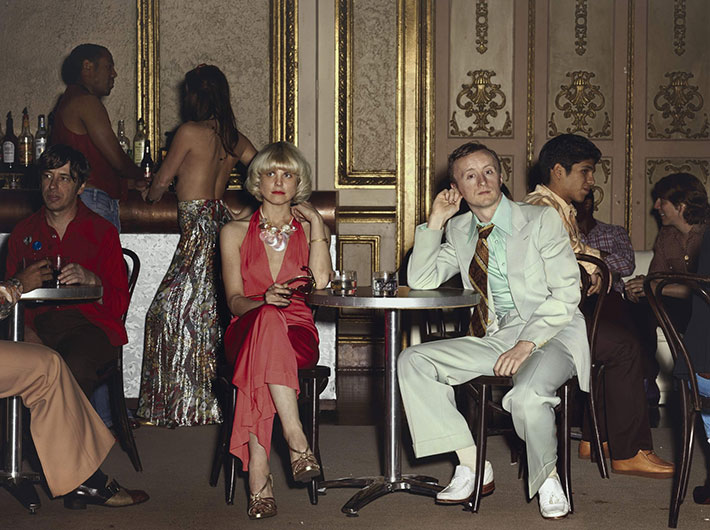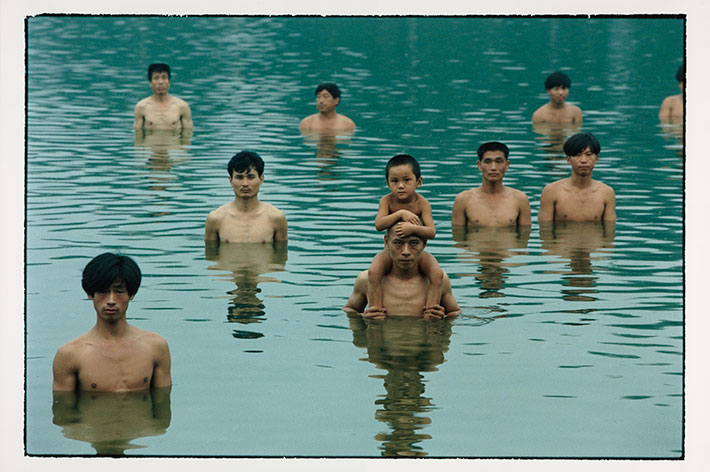The Extended Moment - Fifty Years of Collecting Photographs
By Rebecca Wood Barrett

In 1839, Louis-Jacques-Mandé Daguerre invented the daguerreotype, the first photographic process available to the public. Photographs were immediately embraced as a documentary medium: a way to capture actual events in a single still frame, with no fictional elements. But a funny thing happened on the way to the darkroom: The dawn of photography released artistry, and the medium has been evolving ever since.
From Feb. 8 to March 24, 2020, the Audain Art Museum (AAM) is featuring the special exhibition “The Extended Moment: Fifty Years of Collecting Photographs,” organized by the Canadian Photography Institute of the National Gallery of Canada. The exhibition, assembled over a half-century, explores the development and art of photography by showcasing 180 years of photographic practice from daguerreotype to Polaroid to digital image. “We want to give people an idea of how the medium has changed quite dramatically over time, particularly in the last 20 years with the advent of digital imagery,” says Dr. Curtis Collins, director and chief curator of the AAM.
In the exhibition, historical works are juxtaposed with the contemporary through a diverse range of approximately 75 prints, which reveal the changing role of the photographer as documentarian, journalist, storyteller and artist. For example, the photograph “Study of a Solar Surface” (1894) by Jules Janssen — a French astronomer who was the first to regularly study the sun through photographs — complemented by Spring Hurlbut’s 2008 work “James #5,” a photograph of a cosmic swirl of her father’s ashes against an infinite black background. “Thanksgiving Oceanside,” a stark Newfoundland seascape by 19th-century American photographer Gertrude Käsebier, contrasts vibrant, 21st-century photo-conceptual works by Vancouver photographers Stan Douglas and Rodney Graham, specially arranged for the AAM venue and tying directly to the AAM’s Permanent Collection, which features a number of works by Douglas and Graham.
Ann Thomas, the curator of “The Extended Moment” and senior curator at the Canadian Photography Institute at the National Gallery of Canada, has had a long curating career in photo-based work in Canada and completed a master’s thesis on the relationship between Canadian painting and photography at Montreal’s Concordia University.



“I think the move to impressionism and post-impressionism in the late 19th and early 20th century was a result of photography,” says Collins. Painters realized they couldn’t compete with the accuracy of the photograph, “so that made them re-think painting, and that would result in painters like Picasso and Matisse divorcing themselves from what photographic reality was.” The discovery of the X-ray in 1895 altered the trajectory of both scientific and aesthetic photographic practices, as previously invisible worlds became visible. Josef Maria Eder’s “Snake,” printed as a photogravure, has an exquisite translucent quality that reveals the hidden scaffold of a living thing.
“The Extended Moment” not only arrests the zeitgeist of each period, but it also illuminates an exciting inter-exchange of ideas and dialogue between photographers and their images through photography’s history. The show will be an energizing experience for visitors and locals, who will capture countless digital photographs in the mountains this season. “There are a lot of people in Whistler and the Lower Mainland that photograph skiing and mountain biking, and my thought was the exhibition would be an attractive opportunity for people to see what the history of photography is like, and would be very inspirational to them, stretch[ing] their practices in ways maybe they hadn’t thought of,” Collins says.
For more information about the Audain Art Museum’s exhibitions and special events, visit audainartmuseum.com.

